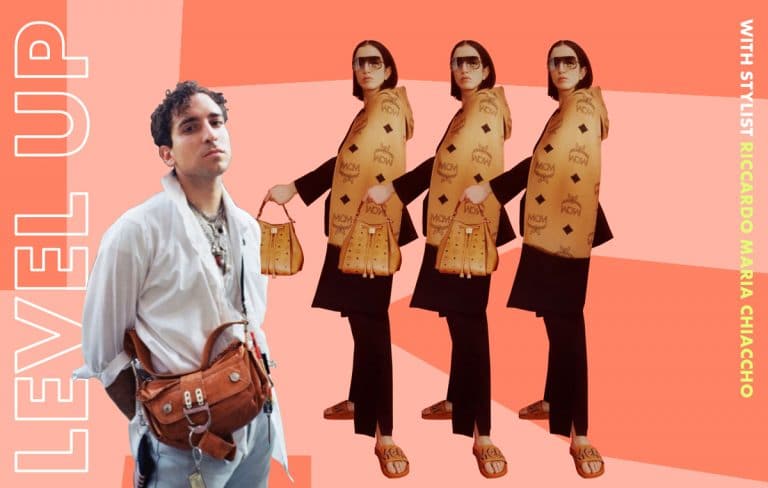Freelance stylist and art director Riccardo Maria Chiacchio on what it takes to become a fashion stylist

We previously spoke about the ins and outs of becoming a fashion stylist with Simone Furlan, who already had a lot of knowledge to share. But in order for you to really nail it, we understand that you need to get some advice from as many professionals as possible, which is why, we asked for some more tips from another amazing stylist and art director, Riccardo Maria Chiacchio. From the importance of using moodboards to your advantage to knowing when to rely on your beloved team, here’s what the fabulous Chiacchio had to share:
Who is Riccardo Maria Chiacchio?
Born and raised in Naples, Riccardo Maria Chiacchio is a stylist based between London and Milan. His use of subliminal details and imaginary structures communicate feelings that characterise his work. He has shot with notable names like Jordan Hemingway, Laura Marie Cieplik, Laurence Ellis, Georgia Hudson, Francois Pragnere, Elliot Morgan, Clark Franklyn, and Luca Anzalone.
Among his clients are brands such as Nike, Ahluwalia Studio, Nike x Off-White, MCM Worldwide, Adidas and Napapijri, as well as publications like The New York Times, i-D, Dazed And Confused Korea and More Or Less Magazine. Chiaccho is particularly known for his gift at highlighting strong Italian roots through his work, resulting in nothing else but sensuality.
Clear moodboards are a must
Like Furlan previously did, Chiacchio swears by moodboards too, “People will always ask for your moodboard, so you need to be 100% sure about the idea that you want to bring on set is very clear to everyone else.” And moodboards are the key to explaining your thinking and creative process to the rest of the team, as well as the client.
“You can either draw it yourself, make it with images, you can add music—there’s no correct way of creating a moodboard,” explains Chiacchio. Simply make sure it comes out as clearly as possible to the magazine or the brand you’re working for. In terms of starting your moodboard, Chiacchio recommends starting with one theme: “Let’s say for example your theme is white. I would research white in history, in music, in the contemporary world, in art, food—anything that has to do with the original theme that you picked.” Research it fully.
Once that’s done, “choose very specific images you’ll need and then from there go more in-depth with the help of those single images to start building your moodboard as a whole.”
Pick your team carefully
“The team you choose to work with is very important. In a photoshoot, the team will be made of a photographer, a stylist, a hair stylist, a makeup artist, maybe a nail technician, a set designer, and then a photographer’s assistant. This is the team for a conventional photoshoot,” explains Chiaccho.
In order to build a strong image that conveys your initial idea, you’ll need the whole team to be on the same page. “Especially hair and makeup, usually they feel left aside in a way, so keep everyone on the same page during the shoot,” he adds. You’re responsible for all of these people, so don’t get too taken away by the adrenaline that your work brings you.
3 main lessons
1. Be an assistant
“That’s how you learn how to practically, physically, and mentally learn how to become a stylist.”
2. Build your own identity
“You need to learn to look into yourself and understand what the message you want to convey is and the kind of stylist you want to become. What is your goal in being a stylist? This is something you should never stop thinking about, even if you’ve been a stylist for the past 10 years.”
3. Be unique
“Always try to differentiate yourself from other people’s work, which doesn’t have to be stylists only. You can draw inspiration from moviemakers, photographers, hair stylists, makeup artists, whoever creates images.” However, be careful not to copy them, otherwise, you’ll end up on Diet Prada’s radar in no time. Mix your inspirations up to create your own aesthetic.





